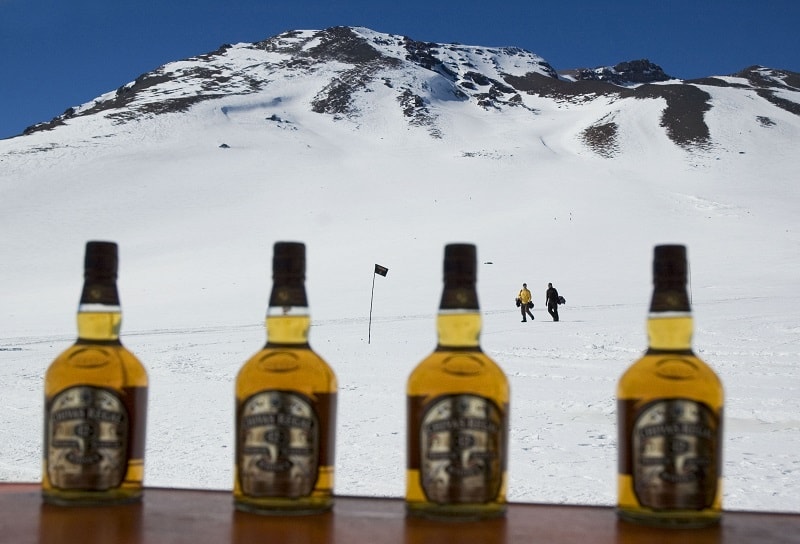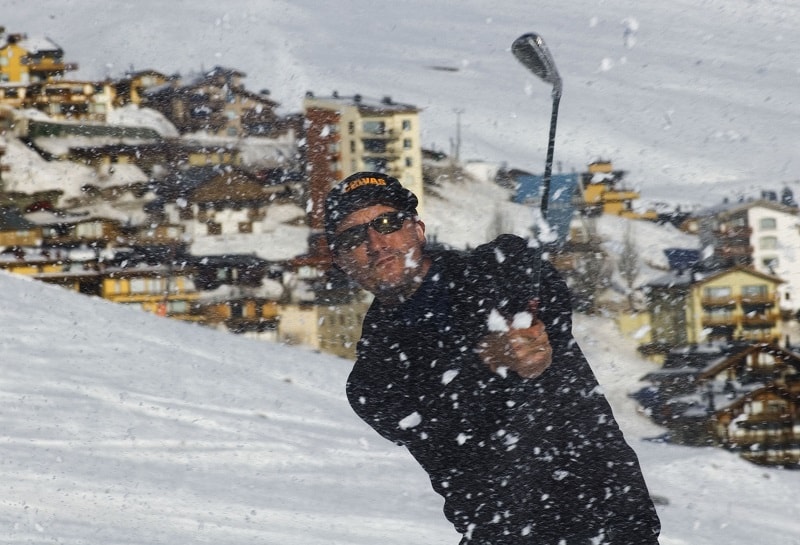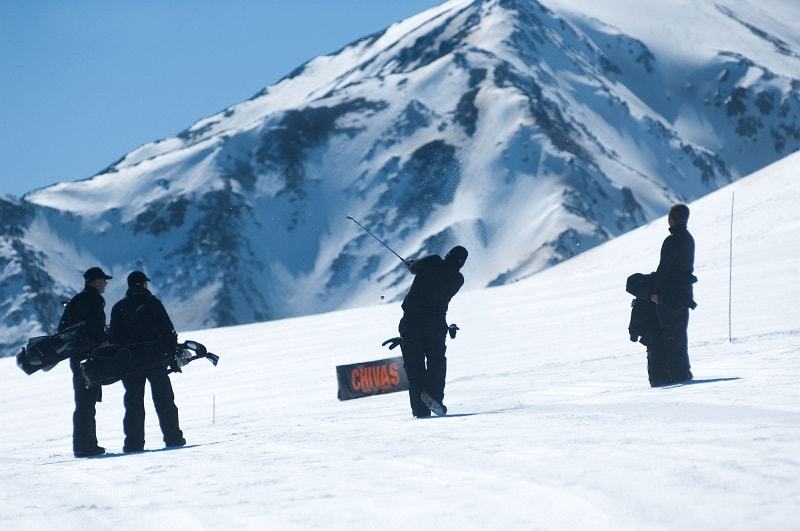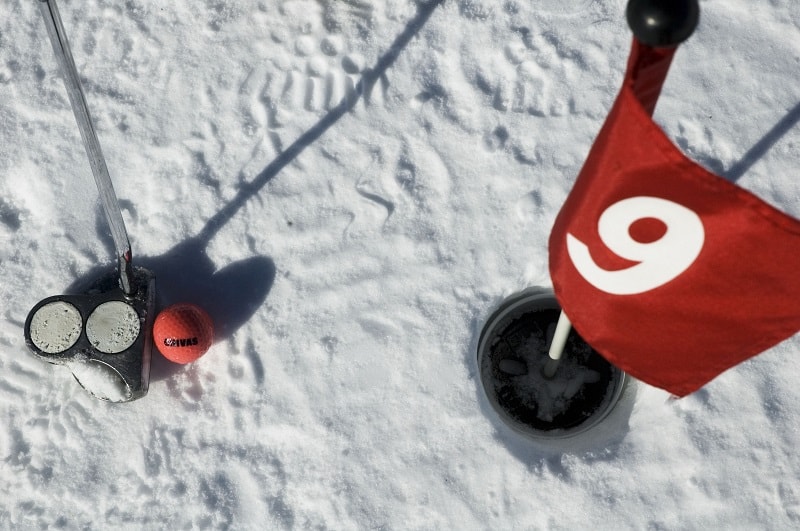CHILE’S snow-covered peaks are perfect for a growing trend in extreme golf that takes those who dare to the Artic Circle, inner cities and desert sands. ANDREW MARSHALL reports.
In recent years, snow golf has become ‘cool’, as evidenced by the increasing number of tournaments and events that take place in areas better suited to snowshoes and skis than golf spikes. One of these is the Chivas Snow Golf Championship, which tees it up each year in the ski resort of La Parva, (located 50kms from Santiago de Chile) and stands at 2,700 metres above sea level

Usually held in mid-August each year tournaments can attract a few hundred competitors from countries such as Canada, the Caribbean, South America and Europe. Played on a 9-hole course and set within a breathtaking backdrop of the Andes mountain range, snow golf is played on fairways which are made of compacted snow, the greens which are 'whites' consisting of frozen snow and the balls used are a fluorescent amber colour. Unlike grass golf, the flags are left in the holes (which are around 30 cm in diameter) at all times, as they are frozen in. Players are permitted to re-tee every shot (using a tee or pyramid of snow) apart from the putts on the 'whites.' Cool golf anyone?
GOLF VS SNOW GOLF The greens are ‘white’ and are fashioned from flattened ice. The ball is fluorescent orange colour. The holes are twice the size of a normal golf hole. Steel-shafted clubs are recommended because of the low temperatures. Trolleys are not permitted as they can ruin the course. The ball may be dropped within 15cm of where it landed, without a penalty. The ball can also be teed up on a plastic peg or a shaped pyramid of snow

A BRIEF HISTORY OF SNOW GOLF Ice Golf has its beginnings way back in the 17thcentury. A painting by the Dutch painter Aert van der Neer (1603 -1677) shows players with a club in their hands attempting to get a ball into a hole in the ice covering a frozen canal in Holland. At that time the game was called kolven.
Legend has it that Rudyard Kipling was the first person to experiment with snow golf, when, on one winter's day back in 1893, he painted some golf balls red and whacked them around his estate in Vermont.

The game has evolved into a sport which now boasts other international tournaments each year including one in St Moritz Switzerland and in Umanaaq, Greenland. The sport is exactly the same as golf except it is, of course, played on snow. On ‘whites,’ an orange ball is more practical than a white one and depending on local rules, after the tee shot, you place the ball either on a tee or a matt for subsequent shots. Putting on ice can be very tricky, but this is somewhat offset by larger holes compared to standard golf.
TIPS FROM THE PROS
Tip 1: Wear Warm Clothes Snow golf requires warm clothes, which will not restrict your swing. It’s best to go for many layers and ensure that you can rotate your back and torso muscles, bend your knees and properly grip the club. Boots suitable for wearing for prolonged periods in the snow and cold are a must (no golf shoes), and don’t forget your sunglasses and sun block.
Tip 2: Higher and Further The ball rolls less on snow-covered fairways, so it’s imperative to play lower clubs than you normally would and also to hit your shots higher. You do this by allowing the club head to overtake the arc of your hands at the point of impact. The club head angle of inclination increases and the ball flies higher.
Tip 3: Better Putting To help with aligning putts, draw a straight line around the centre of the ball. Line up this line with the hole and the line marked on most putters. If the line stays visible on the rolling ball, you have hit the putt well.
Tip 4: Bring a Cloth The rules in snow golf allow for the ball to be lifted and cleaned prior to each shot and then placed either directly on the snow or on a plastic peg. It is also important to carefully clean any snow off the club head so that the club strikes the ball cleanly.
